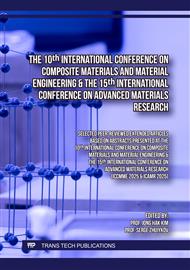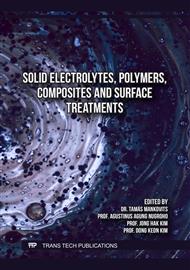p.37
p.45
p.57
p.67
p.75
p.81
p.97
p.105
p.121
Oxidation Resistance Evaluation at High Temperature of Ni5Al and Fe13Cr Coatings on an AISI 321 Stainless Steel Preparing by Plasma Spray Method
Abstract:
This study examines the application of depositing Ni5Al and Fe13Cr alloy coatings onto AISI 321 stainless steel substrates and evaluates their mechanical and oxidative resistance qualities. The Ni5Al coating was found to have a hardness value that is 38% greater than the Fe13Cr coating, as determined by Micro-Vickers hardness testing. Additionally, the Ni5Al coating displayed a more homogenous microstructure. The cyclic oxidation measurements provide evidence of the better performance of the Ni5Al coating in elevated temperatures. The better performance can be attributed mainly to the presence of Al2O3 as the predominant oxide, which is well-known for its exceptional heat resistance and protective properties. However, the overall performance of the Fe13Cr coating is negatively impacted by the presence of Fe2O3, even though there are other favorable oxides such as Cr2O3, NiCr2O, NiO, and Mn2Co3. The Fe2O3 presence greatly diminishes the oxidative stability of the Fe13Cr coating. The results emphasize the capability of Ni5Al as a highly efficient coating material for applications that require exceptional hardness and strong resistance to oxidation. This indicates that it is suitable for high-temperature industrial applications where durability and performance are crucial.
Info:
Periodical:
Pages:
75-79
Citation:
Online since:
May 2025
Authors:
Price:
Сopyright:
© 2025 Trans Tech Publications Ltd. All Rights Reserved
Share:
Citation:



